Since around 1980 or so, horror films have been widely viewed as “not for kids” and with good reason. The vast majority of them are Rated R, for those horror films without the “restrictive” rating (for example, PG-13), they’re usually considered lesser films. However, it was not always this way. Before the late 1960s, horror was recognized as a genre for children – namely between the ages of 8-15. And these were not bad films, many are acknowledged as all-time classics. There was little gore, if any at all, but these films thrived on crafting a genuinely creepy atmosphere. To celebrate this lost tradition, and as a follow up to my Halloween article from last year, I will review 10 horror movies for kids (that are also good films). There really is no reason kids cannot watch a horror film that is both first-rate and age appropriate.
Before I begin, let me first acknowledge that every family has the right to decide what is appropriate for their children (letting your six-year-old attend a Drag Queen Story Hour or watch Hellraiser is never suitable), and I am not trying to make that call for you, although I have erred on the side of caution with this list. These are movies I watched as a child, and still find that they hold up very well.
The Universal Monsters Series (1931-1956) dir. Various
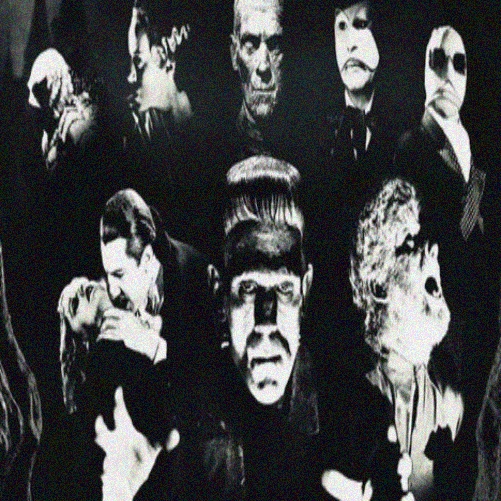
Yeah, yeah, I’m cheating right off the bat by using an entire series, but there really is no way for me to name just one film, and even just picking the seven major films – Dracula, Frankenstein, The Mummy, The Invisible Man, The Bride of Frankenstein, The Wolf Man, and The Creature from the Black Lagoon would have taken up almost all of my list. Besides, they are normally included together on most recent releases. That aside, these really are remarkable films. That they are well-acted and well-written is one thing, but they still manage to work as horror films even as we approach the 100th anniversary of the start of the series. These are chilling films that understand that a little goes a long way. If nothing else, they are great exercises in restraint. Many of these films, especially The Bride of Frankenstein and The Invisible Man, are also quite funny, and I love their beautifully painted sets. Of these films, The Bride of Frankenstein is my favorite, while The Creature from the Black Lagoon probably works best for modern audiences.
All of the original films are essential. Their sequels are more of a mixed bag. As mentioned before, The Bride of Frankenstein is my favorite of the whole bunch while The Son of Frankenstein is wildly underappreciated (it was also far and away the biggest inspiration to Young Frankenstein). Frankenstein Meets the Wolf Man is great fun and will always hold a special place in my heart, and both of the sequels to The Creature from the Black Lagoon are better than they are given credit for. The rest tend to range from mediocre to terrible, but even decades later, the power of the core films has not been diminished one bit.
King Kong (1933) dir. Merian C. Cooper and Ernest B. Schoedsack
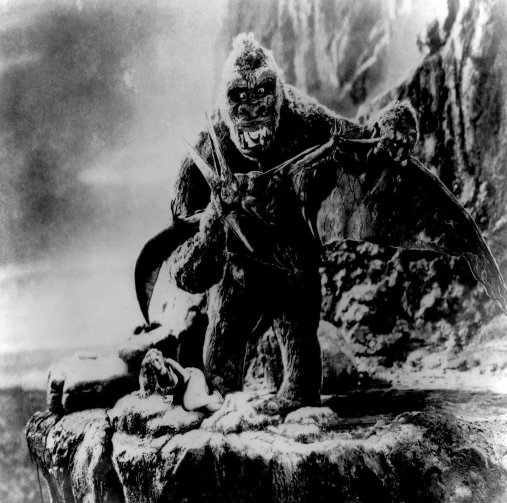
Thanks to the passage of time and two bad remakes, King Kong has more of a reputation as an action/adventure film than a horror movie. However, the original film falls squarely in the horror genre. It’s a very well-paced film, one that manages to work even as it changes its setting from Skull Island to New York City. The destruction in New York is particularly polished. Since Kong is intended to be closer to human size than Godzilla is, the film provides for greater detail on the miniatures, and it continues to make an impact to this day. The stop-motion in Kong still captures my imagination. The fight scenes, in particular, stand out as a great example of what stop-motion is capable of when done right.
The film also does a wonderful job presenting Kong as sympathetic. The movie does not depict him to be a noble savage with wisdom far beyond the understanding of civilized (i.e., White) men. He is a monster that has been taken out of his natural element, and that is when the problems occur. The film is far more subtle on this than it is typically remembered for and is certainly not pozzed. Generally speaking, if a film remains iconic decades later, there is good indication for that – it taps into the audience’s mind and fascination. This is also why quotes from The Godfather are easily recognizable, even to people who have never seen the film. Meanwhile, the general public is largely ignorant of “famous” quotes from the Marvel movies. King Kong, especially with that iconic shot of the Empire State Building, is still part of our popular culture.
The Beast from 20,000 Fathoms (1953), dir. Eugène Lourié
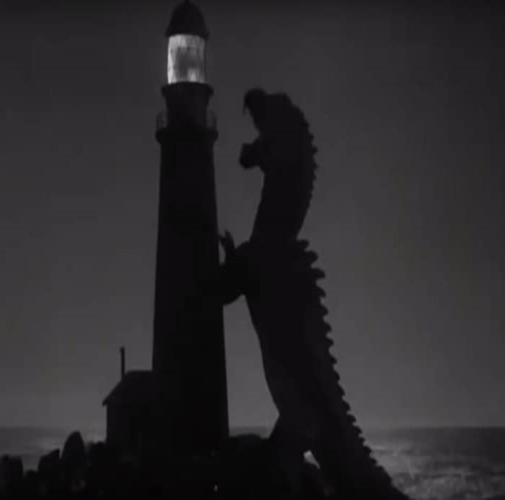
The Beast from 20,000 Fathoms is one of the very first examples of “nuclear cinema” – films that explicitly deal with nuclear war/testing and would dominate American (not to mention Japanese) science fiction well into the mid-1960s. It stands as the template for what the “giant monster attacks the city” genre would become and is, for my money, the very best use of stop-motion ever committed to film. In the movie, nuclear tests free a giant dinosaur, the Rhedosaurus, where it had been in suspended animation for millions of years. Once free, the creature makes a beeline for New York City and brings about destruction.
If that all sounds familiar, it’s because Godzilla would use this same formula. In fact, the God-awful Godzilla remake from the 1990s is more of a copy of this one than its title source. Needless to say, though not particularly well known today, The Beast from 20,000 Fathoms made a huge impact on popular culture. Almost every nation on earth had its very own entry in the “giant prehistoric monster attacks a city” genre – Britain had Gorgo while Denmark had Reptilicus, and The Beast from 20,000 Fathoms is the one that started it all. The fact that it’s such a fun film makes is all the better, it is well-paced, superbly entertaining, and with the best usage of stop-motion in film. It was one of my favorite films growing up, and I think it has aged very well. It also does a great job of capturing the optimism of post-World War II America, the idea that even though science helped free the monster, science can also put it in its place. Misguided? Naïve? Maybe, but watching it now feels like a breath of fresh air, although it is a bit bittersweet to understand what the United States was like in the last century.
Them! (1954) dir. Gordon Douglas
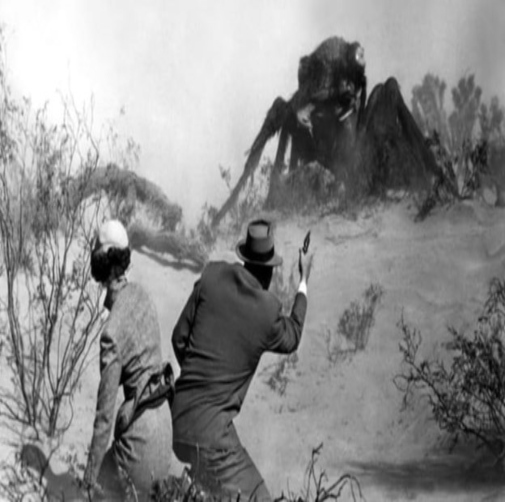
I could make the case that the nuclear bombings of Nagasaki and Hiroshima at the end of World War II was (still is) one of the most important events in the history of film. It certainly unleashed a new era of horrifying war and the films of that period immediately tapped into that fear. Films like The Beast from 20,000 Fathoms and Godzilla are the best remembered of 1950s nuclear cinema, but there was another side of that movement – the “big bug” genre that featured, as the name implies, bugs blown up to epic portions by nuclear testing. Them! from 1954 is the first of its genre and also stands as its very best example. The film does a wonderful job creating a creepy feeling that elevates the film over its subject matter. Sure, it all sounds silly, especially 70 years later, but it still has power.
As with The Beast from 20,000 Fathoms, Them! showcases just how optimistic the United States was right after World War II. Yes, American science and the U.S. military created the problem, but they could also end it. The science fiction films of the 1950s serve as a window into an intact society, and one not filled with self-hatred and nihilism. Looking back at films like this, one thing that stands out is how masculine it is, there really is a sense of manly duty, one that strives to protect and is willing to roll up its sleeves and solve issues. I think far too many on the Right tend to consider films of this era as better for children because of what they lack (i.e., degeneracy), but Them! is also great because of what it has – a sense of manliness that is now missing.
Gojira (1954)/Godzilla, King of the Monsters! (1956) dir. Ishirō Honda
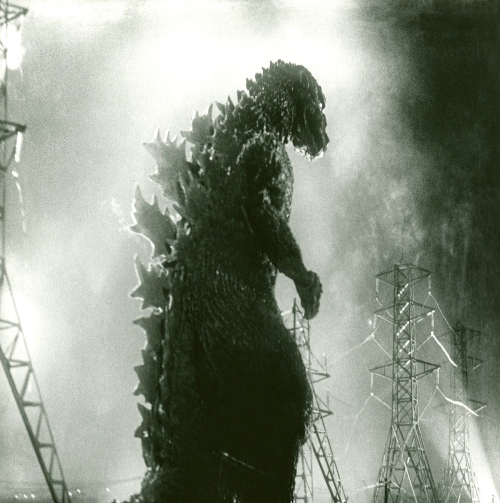
There once was a Japanese film called Gojira, made in 1954, and very obviously an attempt to cash-in on the success of The Beast from 20,000 Fathoms. Because Japan and the United States approached the problem of a nuclear-created monster from radically different vantage points (for obvious reasons), Gojira wound up being a far darker and more somber film. The film was recut and additional scenes featuring Raymond Burr were added. This edited version was released as Godzilla, King of the Monsters! in the United States, where it remained the only legally available version for decades.
I have been a fan of Godzilla for as long as I can remember, and Gojira is one of my favorite films. I still like the American cut, it’s fun, but it does take away the gloom of the original film and the added Raymond Burr scenes are very awkward. The destruction of Tokyo is still impactful, especially with what this film is referencing. All the more important is that this film might be the best example of how differently the Japanese took on the subject of nuclear war. While American films, as seen above, tended to argue that the “nuclear genie” could be used for good, Japan held a more pessimistic tone. While most American films of this era featured a scientist as its hero, in Gojira, its scientist character, upon creating the oxygen destroyer, the one weapon capable of killing Godzilla, burns all of his notes before killing himself along with the monster. He fears what might happen if the weapon is ever used again. The American films were made by an extremely self-confident nation, Gojira was created by a proud nation trying to understand its defeat, much like Southerners did in the aftermath of the War.
The Curse of Frankenstein (1957)/The Horror of Dracula (1958) dir. Terence Fisher
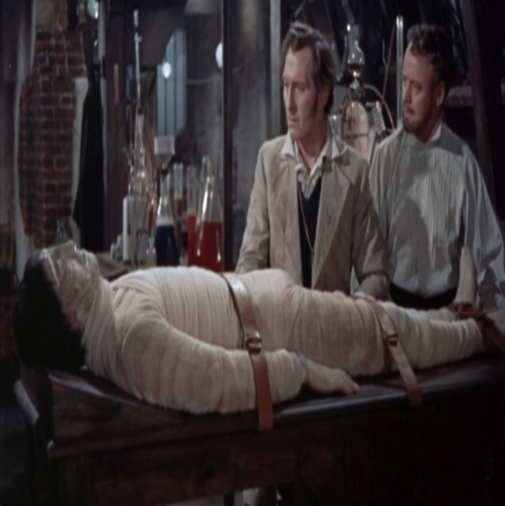
I’m adding two films for one entry, but much like the case of the Universal Monster series, there really is no way I could mention one without the other. Probably better suited for slightly older kids, there is more blood, both of these films work really well, even all these years later. Normally believed as remakes of American films from the 1930s, both of these movies are great on their own. At the core of what makes these films stand out are their elegance, these are classy films that take their subject matter seriously. And though I still think Bela Lugosi was a better Dracula and Boris Karloff will always be Frankenstein’s Monster, Christopher Lee is still great here. Lee, himself a product of the English aristocracy and a staunch conservative, understood the character of Count Dracula very well. More importantly, there has never been a better Dr. Frankenstein or Van Helsing than Peter Cushing.
The chemistry Lee and Cushing have is significant. There is a reason, despite all that both ended up doing, including staring in Star Wars movies (Cushing was in a far better film in the series), why these two are still so often thought of together. The Gothic sets also create a real sense of atmosphere, Hammer put a lot of money and skill into these set designs, and it pays off. Gothic horror is a genre normally associated with black and white, but Hammer proves it can work in vivid color. Although sharing much in common with their Universal counterparts, both of these films manage to put their own spin on the source material. The Curse of Frankenstein and The Horror of Dracula are every bit as essential as Frankenstein and Dracula.
The House of Usher (1960) dir. Roger Corman
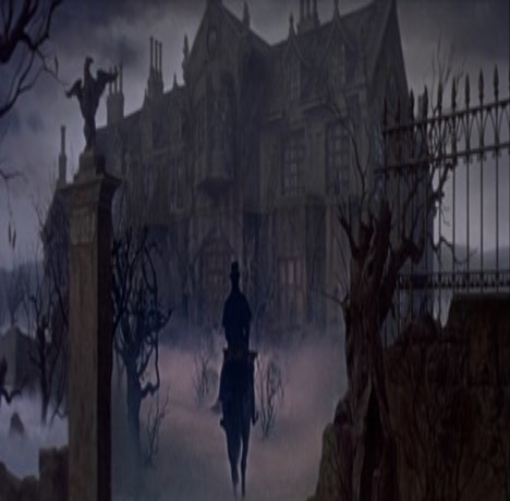
Though born in Boston, Massachusetts, Edgar Allen Poe would move to Dixie, specifically Virginia, at young age after he was adopted by a Richmond businessman following his mother’s death and his father abandoning the family. He would spend most of the rest of his life in Dixie, eventually becoming associated with the city of Baltimore, Maryland, where later he would become known, albeit after his death, as one of the greatest writers of his era. Adapting Poe to the big screen was popular in the 1960s. All in all, director Roger Corman and actor Vincent Price would use this formula together eight times from 1960-1964, although one film, The Haunted Palace, is actually a Lovecraft adaptation that just used the title of a Poe poem. The genre was so popular that The Witchfinder General, a witch-hunting film starring Vincent Price with no connection to any of Poe’s work, would actually be retitled The Conqueror Worm in the United States after a few lines of Price reading the Poe poem (of the same name) were added.
The House of Usher is the very first entry of the Corman/Price/Poe cycle and is a wonderful film. Lovingly made by people who understood and respected the source material, this film stands as a great example of how to add material to an adaptation and it does not feel forced or awkward. The set designs, especially considering the budget, are a true sight to behold; overall, the film does a wonderful job creating brooding atmosphere. While not my favorite of the Poe adaptations – that honor goes to The Masque of the Red Death – this film is an example of Gothic horror done right. And of course, Vincent Price is great, the man had a true gift of being able to ham it up without the film falling into a farce, and that skill is on full display throughout this film.
Young Frankenstein (1974) dir. Mel Brooks
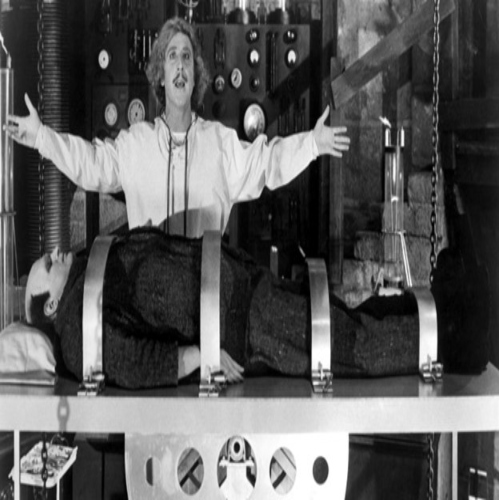
Normally considered a parody of Frankenstein (1931), Young Frankenstein takes more inspiration from the criminally underappreciated Son of Frankenstein. Still, Young Frankenstein is one of the best horror comedy films ever made. Far more subdued than most of Brooks’ films, Young Frankenstein is a wonderful collection of sight and verbal gags that still work today. Some might be subtle, and some may be farcical, but they work. Gene Wilder’s energy is infectious here, it really is the driving force that gives the film its anarchic feel. Peter Boyle is first-rate as the Monster too, the scene with him and the old hermit (Gene Hackman) is the best in the movie. Kids will certainly enjoy the slapstick humor, but it gets even better for those who have watched the scene in Bride of Frankenstein from which that scene draws its inspiration. Marty Feldman is brilliant as Igor (Eye-gor), especially earlier in the film when Gene Wilder is still paying the straight man.
The fact that so many of the obvious jokes, like “walk this way,” works after multiple viewings is a testament to the skill that went into making the film. The use of black and white and the set designs are a loving recreation of one of the best aspects of the Universal films. Generally speaking, I think parody performs best when it is made by people who love the source material, as they will try to understand what makes said material worth parodying in the first place. Young Frankenstein is one of the best examples of that maxim. Sure, it mocks Frankenstein and more, but it does so in a way that takes the film seriously and tries to understand it.
Jaws (1975) dir. Steve Spielberg

Much like Godzilla, Jaws is one of those films I’ve always liked. Sitting on the boundary between action/adventure and horror, Jaws does many things and does them all well. The film is exciting, embedded with a sense of adventure, and masculine duty. The three men that go out to kill the shark have a sense of honor among them. Even more telling is that the two more masculine men, the police officer and the fisherman, understand the importance of what they are doing more than the overly educated younger character. Although made by a child of the post-World War II generation and considered as part of New Hollywood, the film’s sympathies are clearly aligned with the older generation, it has a sense of restoring the honor that was lost during the turmoil of the 1960s. The film also has a horror element that works wonderfully. The decision to wait so long to reveal the shark still stands as the right call. And while jump scares tend to be looked down as a cheap way to get thrills, Jaws shows how it can be done right.
As mentioned with King Kong, for a film to still be remembered decades later and for it to become part of the culture, it has to do something correctly, and Jaws demonstrates that very well, especially John Williams’ score. Even people who have never seen Jaws still know its score and for good reason, it creates a sense of dread even in scenes of open water and when nothing else is on the screen. Jaws is a film that can do it all.
The Monster Squad (1987) dir. Fred Dekker
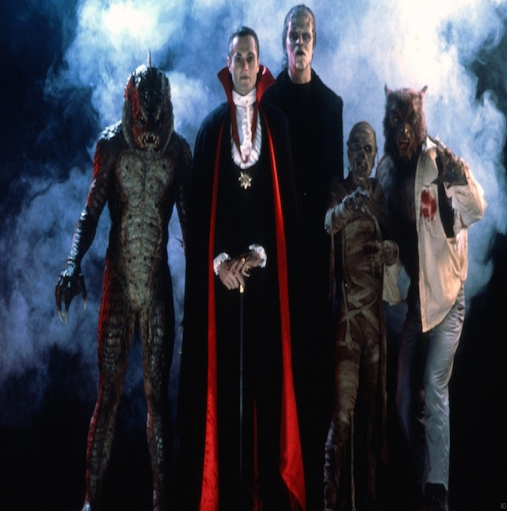
I’m ending this list in the best way I know how with The Monster Squad. The Monster Squad is a film for kids who grew up loving classic Universal monsters. Even in the 1980s, in the era of Freddy and Jason, there were still a surprising number of children who preferred the films from the 1930s and 1940s. This film is centered around a bunch of young kids who have united around a shared love of the classic horror films, dubbing themselves the Monster Squad. They eventually discover that the monsters they love are real and, being led by Count Dracula, are plotting to take over the world. Imagine Stranger Things without the pozz or Castlevania meets The Goonies.
The Monster Squad is a film that deeply loves the Universal horror films of the 1930s and 1940s, and understands why so many young people were drawn to them, not just when these films were new, but also extending into the 1960s (The Munsters was made to appeal to young people who loved these films) and even into the 1980s. The film does a fantastic job developing its young cast, the lesser “kid films” of this era have a nasty habit of creating a bunch of one-note characters; thankfully, The Monster Squad does not fall into this trap, even as none of its young cast went on to have much of a career afterwards. At the core of The Monster Squad is a love for the Universal horror classics. It understands not just those movies, but also the fanbase. The Monster Squad is best for kids who already love classic horror.
The idea of horror being strictly for adults, or at least older teens, is a product of the post-1970s world. All but three of the films on this list were made before 1970, and the two made after 1970 were parodies and/or tributes to older films. There is a long tradition of horror movies for younger kids, and it’s a tradition that can be rediscovered. And contrary to popular belief, there is no reason to sacrifice quality to do it, all of these films stand out as some of the best loved horror movies ever made.
Happy Halloween!


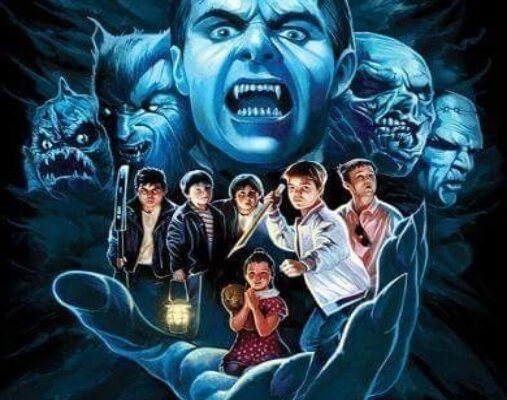
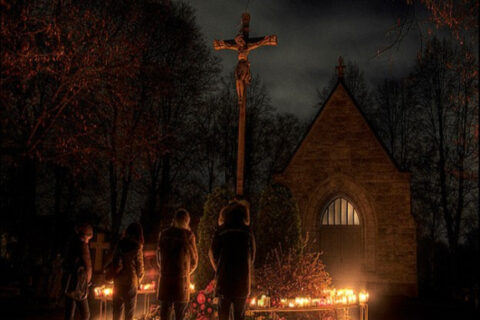

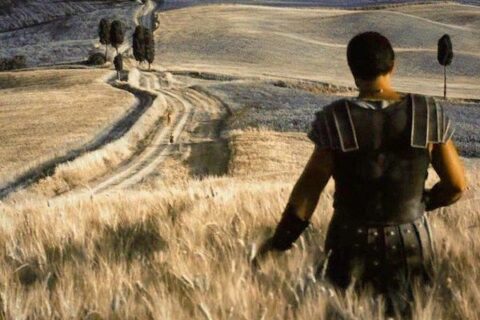
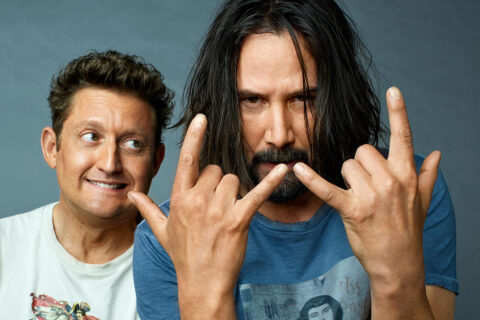
Wow, as a Gen Xer; I can’t believe I have never seen Monster Squad.” Thank you for the tip, I loved it. Unfortunately, my 14 year old wasn’t interested once I told her it was from ‘87.
“The Last Man on Earth” A.K.A the OG film version of Richard Matheson’s “I Am Legend”. IMO much better than the Will Smith re-make from the 2000s
https://en.wikipedia.org/wiki/The_Last_Man_on_Earth_(1964_film)
“The Thing from Another World” A.K.A. the far less gory and more child-appropriate version of the 1980s John Carpenter film
https://en.wikipedia.org/wiki/The_Thing_from_Another_World